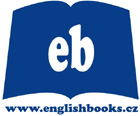Figure A is understood to be the name or
title of the illustration. It's a technical use of the word
“figure”. We can't (in this context, where “figure” is the name of some
kind of illustration) say, for example, look at the
figure below. We have to say look at (the
graph/diagram/illustration/picture called) Figure 1 below.
Door A is felt to be the name of the particular door in a
limited set of doors. There are (for example) three doors, one is called Door A,
the next one's called Door B, and the third is called Door C. The prize is
behind the Door A. You can also say the
prize is behind the door with an
A on it.
He does not have a/any plan B. You can only say He does not have plan
B if it's a newspaper headline, in which articles are usually omitted.
Plan B is not felt to be part of a limited set of plans, it's one of any
(unlimited) number of possible contingency plans (unless there's something in
the context to indicate otherwise).







 Vloženo před 5 lety
Vloženo před 5 lety

